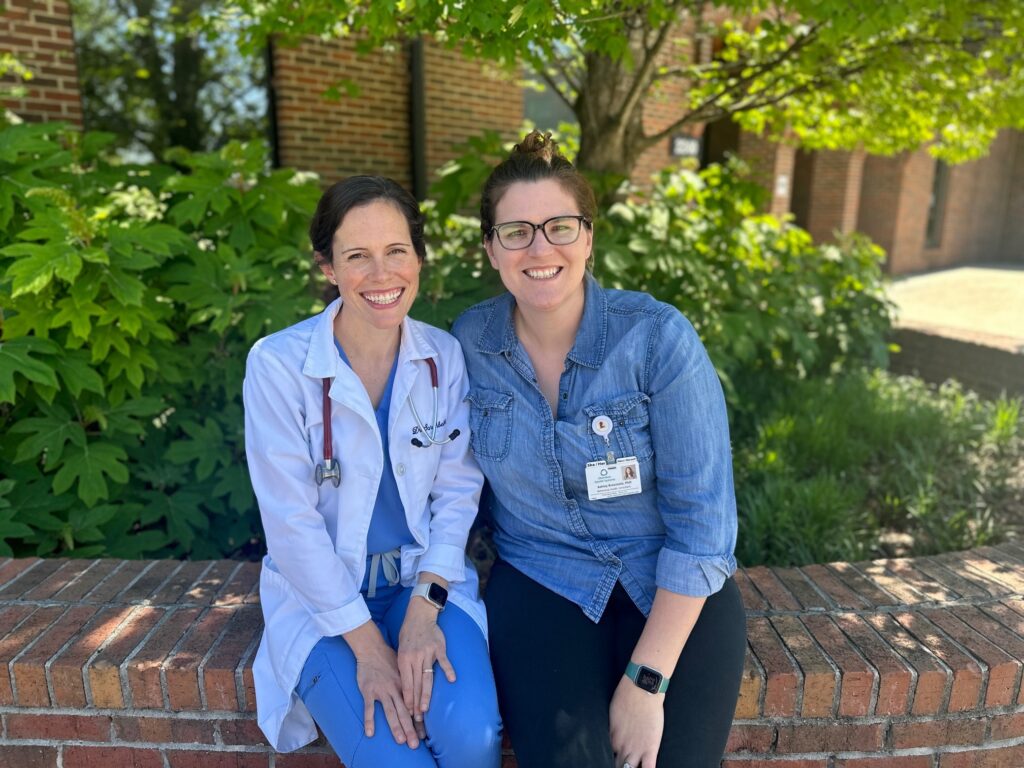Cherokee Health Systems, a Federally Qualified Health Center (FQHC) in East Tennessee and licensed Community Mental Health Center (CMHC) developed an innovative and new model of care called the NURTURE model to address maternal and infant mental health. It is one of the first fully integrated community health clinics to offer pediatrics, obstetrics, gynecology (OB/GYN), breastfeeding medicine, case management, nutrition, and behavioral health services for families in the same location across the perinatal period, which is from preconception through the first year postpartum. The services are offered at the point of care to help reduce negative social drivers of health that most impact engagement in health care.

We recently discussed Cherokee’s new model of care with Dr. Sarah Beth Eriksen, a pediatrician and board-certified lactation consultant and Dr. Ashley Breazeale, a licensed psychologist to learn more about the innovative program they both developed.
What barriers do your staff face daily to provide healthcare services?
As an organization, we see more than 67,000 patients a year. The majority of our patients are under/uninsured, including 23% who are uninsured and 40% who are on Medicaid (TennCare). The integrated OB/GYN/Pediatric clinic in which NURTURE evolved serves a majority limited English Proficiency (LEP) and non-English speaking population. A significant portion of prenatal patients start their prenatal journey uninsured and under-resourced. As such, we have had to develop creative strategies to address systemic barriers to care, including innovative scheduling to accommodate mother and infants at the same visit time and a high degree of communication across disciplines at the point of care, and team transformation, which resulted in an organic transformation to support this model at the team level.
The U.S. has the highest maternal mortality rate among developed countries. How is Cherokee Health Systems paving the way with this new model for integrating maternal and pediatric care?
We are extremely grateful for all the support and resources that our organization has invested in supporting innovative models such as NURTURE. We are fortunate to have buy-in from our leadership (starting with our CEO) and a culture of putting the patient and family at the center of care. As such, we have the flexibility to be creative and innovative to address the adverse health outcomes experienced by mothers and infants in our country. It is important to note that this model was developed by providers with boots on the ground, during the course of caring for patients day to day. As a pediatrician and licensed psychologist, we both developed this model standing at a nurse’s station burdened by the reality of what our families face during the perinatal period. As our vision for an innovative way to better serve mothers, infants, and the family unit began to develop and crystalize, we benefitted from unwavering support at every level of leadership. Cherokee Health Systems is about IMPACTFUL INNOVATION. We are continually thinking of ways to reduce burdens that impact access to the highest quality health care, particularly for our most vulnerable and under-resourced communities.
You were recently recognized as one of America’s Greatest Workplaces for Diversity 2024. How does having a diverse staff serving your rural community make a difference?
Having a diverse staff is foundational to meeting the needs of the patients we serve in our organization. For our families, coming to the clinic and having staff members that may have a shared lived experience or look like them aids in increasing trust/engagement in the health care system. Further, cultural humility is of the highest value within this model. It challenges healthcare providers to put the families at the center of their health care and empowers patients to share in the decision-making about their own health care. Having a diverse staff allows for unique perspectives and multiple voices in tackling change at the individual and systems level and results in more robust models of care such as NURTURE.
What advice would you give to other health centers looking to replicate this successful care model?
Within this model, we applied a spokes and hub on the wheel framework. We built a solid center (hub) and then built out the spokes over time. These connections to other services, such as nutrition, were thoughtfully aligned and supported by the core (hub) of care. We watched and listened and adapted along the way. We let our patients and families be our guide, and our mission was our compass. We encourage other organizations to think creatively about integrating the different types of services they already offer within their organization, and consider how these linkages may help address negative social drivers of health as well as enhance engagement in care. For example, although a health center may offer pediatrics, OB/GYN, and behavioral health, they are spread out in different buildings. It is important to think about factors that potentially impact engagement (e.g., transportation, having to take off work for appointments on two separate occasions) and what your organization can do to reduce the burden of the patient to engage in high quality health care. We have intentionally developed and implemented this model as an iterative and methodical process. Our model continues to be refined as we integrate feedback from patients and staff and monitor outcomes. This would be one of the biggest pieces of advice we could give to other organizations – find and build connections where you can, and let your patients be your guide!
Learn more about Cherokee Health Systems and its impactful work at www.cherokeehealth.com.